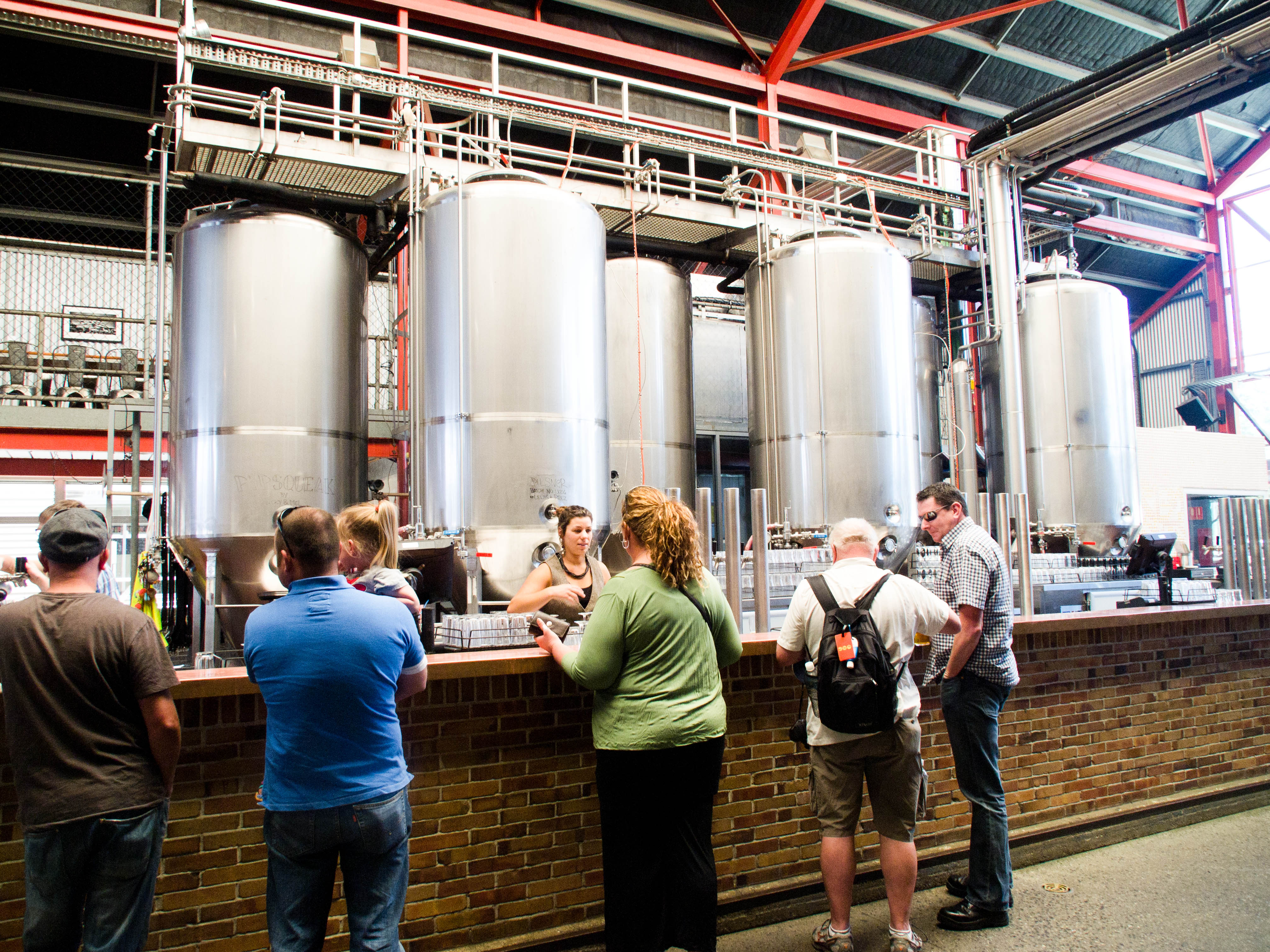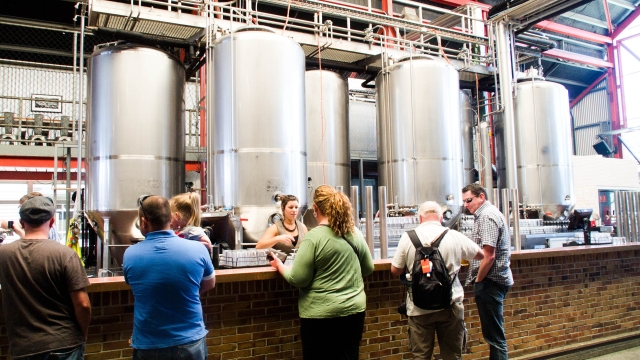In the world of beer brewing, the right equipment can make all the difference between a mediocre brew and a masterpiece. That’s where brewery equipment comes into play. But what exactly is brewery equipment? Put simply, it encompasses all the essential tools and machinery required to transform raw ingredients into flavorful and refreshing beers. From the mash tun to the fermentation vessels, each piece plays a crucial role in the brewing process.
Whether you’re a seasoned brewer or just starting out, understanding the ins and outs of brewery equipment is key to unleashing the magic in every batch. This comprehensive guide aims to break down the different types of brewery equipment, explain their functions, and provide valuable insights into how to choose the right equipment for your needs. So grab your pint glass and get ready to dive into the fascinating world of brewery equipment – let’s brew some brilliance!
Understanding Brewery Equipment
Brewery equipment plays a pivotal role in crafting the delightful beverages we enjoy. From the fermentation tanks to the intricate piping systems, every component has a crucial function in the brewing process. Understanding brewery equipment is essential for brewers, enthusiasts, and anyone curious about the art of bringing together hops, malt, water, and yeast to create vibrant and flavorful concoctions.
At the heart of brewery equipment are the brewing vessels, also known as mash tuns, lauter tuns, and brew kettles. These large containers provide the space for the brewing process to unfold. The mash tun, for instance, is responsible for mixing crushed malt grains with hot water to extract the sugars needed for fermentation. The lauter tun, on the other hand, separates the liquid wort from the solid grain particles, allowing for further processing. Lastly, the brew kettle is where the wort is boiled and hops are added, contributing crucial flavors and aromas.
Apart from the brewing vessels, various other equipment pieces come together to form a comprehensive brewery setup. Pumps, for example, facilitate the movement of liquids between different stages of the brewing process, ensuring smooth transitions and efficient operations. Heat exchangers play a vital role in cooling the wort after boiling, enabling the introduction of yeast for fermentation. Filtration systems remove impurities and clarify the beer before it reaches the final stages of production.
In addition to these key components, brewery equipment encompasses an array of valves, fittings, sensors, and control systems. Valves are responsible for regulating the flow of fluids throughout the brewing process, while fittings ensure secure connections between different parts of the equipment. Sensors provide valuable data on temperature, pressure, and other variables, allowing brewers to monitor and optimize their recipes. Finally, control systems manage and automate various processes, ensuring consistency and quality across batches.
Understanding brewery equipment empowers brewers to create exceptional beers, as they develop an intimate knowledge of how each element influences the final product. By mastering the intricacies of mash tuns, brew kettles, pumps, and other machinery, brewers unleash the magic of brewery equipment and cultivate a true appreciation for the art of brewing.
Types of Brewery Equipment
Brewery equipment plays a crucial role in the beer-making process, ensuring that every step is executed flawlessly. With various types of brewery equipment available, brewers have the flexibility to choose the tools that best suit their needs. In this section, we will explore three common types of brewery equipment and their importance in the brewing process.
Brewhouse Equipment
The brewhouse is considered the heart of a brewery, where the magic of beer production begins. Brewhouse equipment includes the mash tuns, brewing kettle, and lauter tun. These components work together to convert grain into wort, the sweet liquid that will eventually become beer. The mash tun is responsible for mashing, where the malted grains are mixed with hot water to extract sugars. Next, the brewing kettle boils the wort, allowing hops to be added for bitterness and flavor. Finally, the lauter tun separates the liquid wort from the solid grain material. Brewhouse equipment is essential in creating the perfect foundation for brewing remarkable beer.Fermentation Equipment
Once the wort has been prepared, it is transferred to the fermentation vessels where yeast is added for fermentation. Fermentation equipment consists of fermenters and brite tanks. Fermenters are designed to provide an optimal environment for yeast to convert sugars into alcohol and carbon dioxide, allowing the beer to develop its distinctive flavors. Brite tanks, on the other hand, serve as a secondary vessel where the beer undergoes further conditioning and clarifying before it is packaged. Fermentation equipment ensures that the beer reaches its full potential, both in terms of taste and appearance.Packaging Equipment
Packaging is the final stage in the beer production process, where the finished product is prepared for distribution and consumption. Packaging equipment includes bottling machines, canning lines, keg fillers, and labeling machines. These tools automate the packaging process, ensuring efficiency and consistency in filling and sealing containers. Whether it’s bottles, cans, or kegs, packaging equipment allows breweries to present their beers attractively while maintaining the quality and freshness of the product.
Beer Brewing Equipment
In conclusion, brewery equipment comprises various types of specialized tools that are essential for brewing exceptional beer. From the brewhouse equipment that kickstarts the fermentation process, to the fermentation equipment that brings out the beer’s distinctive qualities, and finally, the packaging equipment that prepares it for distribution, each type has its own important role. Understanding the different types of brewery equipment is instrumental for brewers in producing high-quality, innovative, and delicious beers.
Choosing the Right Brewery Equipment
When it comes to setting up a successful brewery, selecting the appropriate equipment is crucial. The right brewery equipment can make a world of difference in terms of the quality and efficiency of your brewing process. Here are some key factors to consider when choosing the perfect brewery equipment for your operation.
Firstly, determine the scale of your brewery and the volume of beer production you aim to achieve. This will help you understand what size of brewing system will suit your needs. Whether you’re starting a small microbrewery or a large-scale production facility, it’s essential to match the size of your equipment to your brewing goals.
Next, take into account the specific requirements of your beer recipes. Some brewing styles necessitate specialized equipment, such as fermenters with precise temperature control or separate vessels for mashing and boiling. Assess your brewing techniques and recipes to ensure the chosen equipment can meet your unique needs.
Lastly, consider the quality and durability of the equipment. Investing in high-quality brewery equipment may require a larger initial investment but can save you money in the long run. Look for reputable manufacturers known for their craftsmanship and reliability. Additionally, check for warranties and after-sales support to ensure that you have assistance if any issues arise.
By carefully considering the scale, specific requirements, and quality of the brewery equipment, you can make an informed decision that sets the foundation for your brewery’s success. Remember, choosing the right equipment is not just about functionality; it’s about unleashing the magic of brewing and creating an exceptional experience for both you and your customers.



